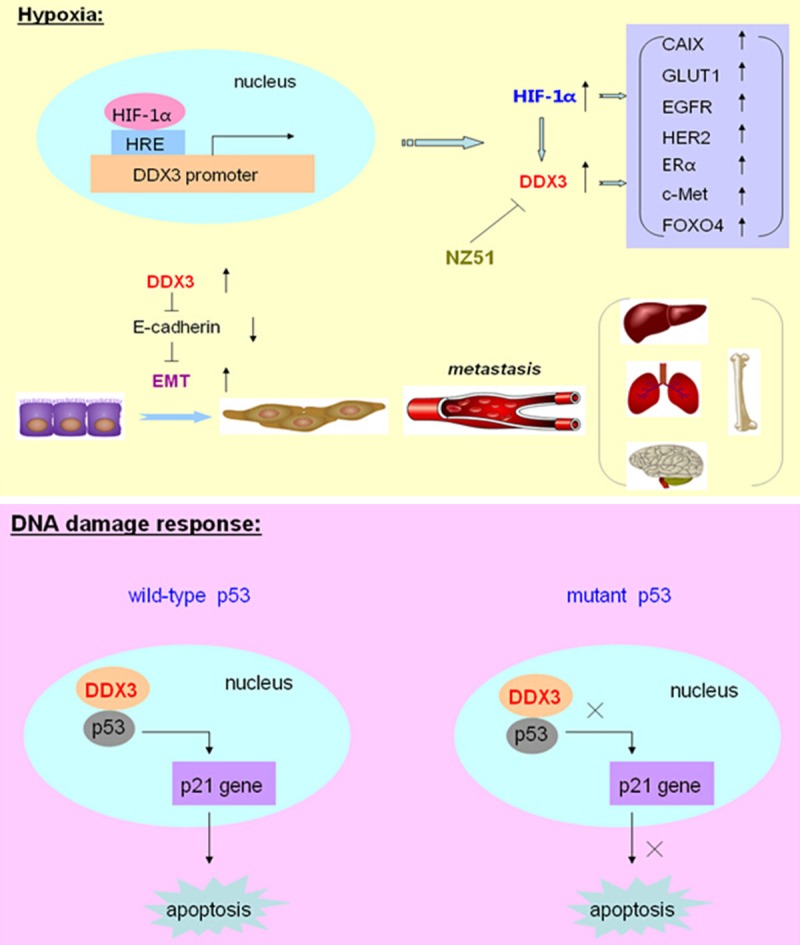Figure 1.

The role of DDX3 in breast cancer. Under hypoxic conditions, hypoxia inducible factor-1α (HIF-1α) could bind to the putative HIF-1 responsive elements (HRE) located in the promoter region of DDX3 gene, and transcriptionally activate the expression of DDX3. Meanwhile, the expression of DDX3 was correlated with over-expression of HIF-1α and its downstream genes CAIX, GLUT1, and several hypoxia related genes, including EGFR, HER2, ERα, c-Met and FOXO4. Moreover, DDX3 could repress E-cadherin expression and induce the Epithelial-mesenchymal transition (EMT) process to facilitate breast cancer metastasis. A novel DDX3 inhibitor, which a ring-expanded nucleoside analogue (REN), named for NZ51, could inhibit the ATP dependent helicase activity of DDX3. During DNA damage response, DDX3 could associate with p53, promote the accumulation of p53 in the nucleus, and activate its downstream target p21 expression, so as to modulate DNA damage induced apoptosis in cells expressed functional wild-type p53. However, in cells expressed non-functional or mutant p53, DDX3 otherwise inhibited the apoptosis process.
